 The rainy morning of April 21st was met with a sunny visitor to IUP, with the arrival of Kelley Berliner, the Eastern Regional Director of the non-profit organization known as The Archaeological Conservancy, for our final Graduate Colloquium of the semester. We had a great turnout for her fascinating presentation on the Conservancy’s preservation efforts from Paleoindian to Historic sites.
The rainy morning of April 21st was met with a sunny visitor to IUP, with the arrival of Kelley Berliner, the Eastern Regional Director of the non-profit organization known as The Archaeological Conservancy, for our final Graduate Colloquium of the semester. We had a great turnout for her fascinating presentation on the Conservancy’s preservation efforts from Paleoindian to Historic sites.
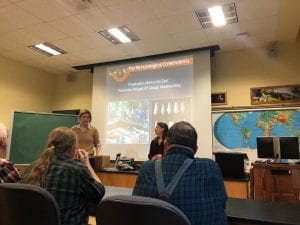
The Conservancy is the only non-profit dedicated to the acquisition and preservation of archaeological sites in the United States. Founded in 1980 from the realization that most legislation focused on preserving sites on public land, the Conservancy sought to purchase and protect sites on private property, and now they have over 20,000 members! They also publish the American Archaeology magazine, provide archaeological tours out of their offices, and of course, preserve and manage archaeological sites. The sites are now all open-space research preserves open to professional archaeologists, but they do keep parts unexcavated for future researchers with improved technologies.
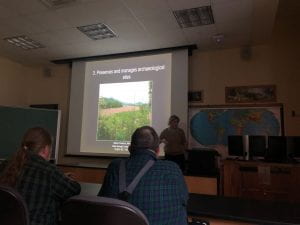 The Archaeological Conservancy is made up of five regional offices, with Pennsylvania in the Eastern Region. In the history of the Eastern Regional Office, the Conservancy has up to around 70 preserves. Kelley does a bit of everything as being the only person in the Eastern Office, such as acquiring and researching sites, handling real estate closings, managing properties, reviewing proposals, attending descendent community events. She gets together two times a year with the other offices, which is their general board meeting as they are run by a board that approves their acquisitions.
The Archaeological Conservancy is made up of five regional offices, with Pennsylvania in the Eastern Region. In the history of the Eastern Regional Office, the Conservancy has up to around 70 preserves. Kelley does a bit of everything as being the only person in the Eastern Office, such as acquiring and researching sites, handling real estate closings, managing properties, reviewing proposals, attending descendent community events. She gets together two times a year with the other offices, which is their general board meeting as they are run by a board that approves their acquisitions.
So how do they start their process? They first identify what sites would be good for preservation, using the disciplines network of archaeologists, university professors, CRM professionals, avocational archaeologists, state societies, travel and state offices, and more, in order to locate sites that could need the Conservancy’s efforts. This might even include reviewing museum and library archives or old site records that have not been looked at in a long time.
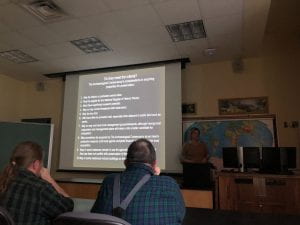 When determining whether a site is important for preservation, a main consideration is whether it is eligible for the National Register of Historic Places (NRHP). The Conservancy does nominate their preserves for the National Register, and many are already on it. There are of course other considerations, such as, budgetary issues, how it will be managed, its research potential, and accessibility, to name a few. Threats sites are facing, such as development, fracking, coastal erosion, and looting, are also factors.
When determining whether a site is important for preservation, a main consideration is whether it is eligible for the National Register of Historic Places (NRHP). The Conservancy does nominate their preserves for the National Register, and many are already on it. There are of course other considerations, such as, budgetary issues, how it will be managed, its research potential, and accessibility, to name a few. Threats sites are facing, such as development, fracking, coastal erosion, and looting, are also factors.
The next step is to contact the property owners and get acquisition options. Berliner noted that it takes quite a bit of work to get to the point of sending out letters, and for about every 25 letters she sends, they might get about one response back. If they get someone willing to work with them, they try to acquire the land through outright purchase, ideally a donation, or a bargain sale, so that people can sell slightly below the appraised value and receive tax benefits! She also mentioned that depending on the site, she does work with descendent communities often, and in various ways, from contacting them to having site dedications.
They then of course must manage the sites. All sites are unique, some require surface collection and some don’t, some need to be kept mowed and some are woods lots, and some are going to have different management needs, and therefore management plans will be developed with the site’s differences and best interests in mind. 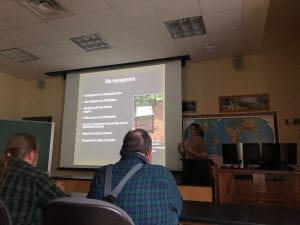 Berliner stated that when the Conservancy monitors sites after they have been acquired, it depends on the sites and their needs, so for example, some sites are fenced. Their main deterrent is working with a national system of site stewards, such as former property owners, a neighbor, a farmer, a hunter, a local archaeological society or local archaeologist. In the east, the biggest issue is metal detecting on military sites. The Conservancy is careful when posting or writing about their properties, and they follow purple paint laws (marking purple blazes for property lines). In terms of public access to their preserves, they want to keep their locations secret in order to prevent looting, and some sites are just challenging to get to. However, they do post videos on YouTube, and they are open for educational purposes, such as a school field trip.
Berliner stated that when the Conservancy monitors sites after they have been acquired, it depends on the sites and their needs, so for example, some sites are fenced. Their main deterrent is working with a national system of site stewards, such as former property owners, a neighbor, a farmer, a hunter, a local archaeological society or local archaeologist. In the east, the biggest issue is metal detecting on military sites. The Conservancy is careful when posting or writing about their properties, and they follow purple paint laws (marking purple blazes for property lines). In terms of public access to their preserves, they want to keep their locations secret in order to prevent looting, and some sites are just challenging to get to. However, they do post videos on YouTube, and they are open for educational purposes, such as a school field trip.
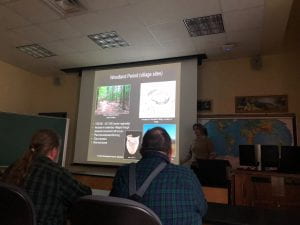
The sites they preserve include a range of Prehistoric and Historic sites. Prehistoric sites include Paleoindian sites like the Nevers Preserve in New Hampshire, Archaic sites like the Dresden Preserve in Maine, Woodland sites like Koon’s Landing in North Carolina, Contact period sites like the Oscar Leibhart Preserve in Pennsylvania, and quarry sites likes the Prince Edward Soapstone Quarry Preserve in Virginia. Historic sites include  colonial sites like Kippax Plantation Preserve in Virginia, which is also a multicomponent site,
colonial sites like Kippax Plantation Preserve in Virginia, which is also a multicomponent site, 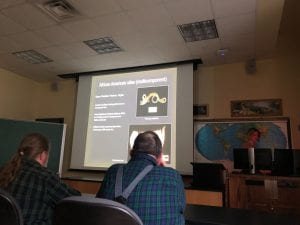 African American sites like the 18th century Arbuckle’s Fort Preserve in West Virginia, industrial sites like the 19th-20th century Pamplin Pipe Factory Preserve in Virginia and the Big Pond Furnace Preserve in Pennsylvania, religious sites like the Upper Lunenburg Episcopal Church in Virginia and the Synagogue parcel of the NEHFES Synagogue and Creamery site in Connecticut which is the site of a 19th century Russian-Jewish immigrant community, and military sites like forts, battlefields, and the Royal Blockhouse of Fort Edward in New York.
African American sites like the 18th century Arbuckle’s Fort Preserve in West Virginia, industrial sites like the 19th-20th century Pamplin Pipe Factory Preserve in Virginia and the Big Pond Furnace Preserve in Pennsylvania, religious sites like the Upper Lunenburg Episcopal Church in Virginia and the Synagogue parcel of the NEHFES Synagogue and Creamery site in Connecticut which is the site of a 19th century Russian-Jewish immigrant community, and military sites like forts, battlefields, and the Royal Blockhouse of Fort Edward in New York.
 In Pennsylvania, the Conservancy has 17 preserves. These include sites like Prehistoric Earthworks like the Dingfelder Circle in Erie County, Monongahela village sites, Woodland village sites which include the largest preserve they have in the Region, the Queen Esther’s Town in Bedford County that is almost 100 acres in size, quarry sites like King’s Quarry in Lehigh County that was used for a long period of time as people returned to it, and of course Historic sites like the Fort Littleton (Lyttleton) Preserve in Fulton County.
In Pennsylvania, the Conservancy has 17 preserves. These include sites like Prehistoric Earthworks like the Dingfelder Circle in Erie County, Monongahela village sites, Woodland village sites which include the largest preserve they have in the Region, the Queen Esther’s Town in Bedford County that is almost 100 acres in size, quarry sites like King’s Quarry in Lehigh County that was used for a long period of time as people returned to it, and of course Historic sites like the Fort Littleton (Lyttleton) Preserve in Fulton County.
They also have the Ebbert Spring Archaeological Preserve and Heritage Park in Franklin County which is open to the public. 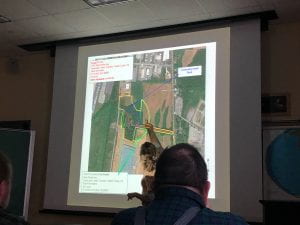 This site has a dense Prehistoric component, dating back 10,000 years, and a Historic component, and yet it is not near any major waterway. However, it has a karste, limestone landscape that creates many high-output freshwater springs! Ebbert Spring in particular puts out over 600 gallons of water a minute! The area was also highly desirable for industrial development and the property was owned by a man named Al Bonnell. The Archaeological Conservancy was able to purchase the site from his son after Bonnell passed, knowing that his goal was to have it preserved ultimately. And today, after 15 years of work, it is a site that is now a park that is accessible to the public through a partnership with the local museum and the town, and by working with the nearby developers.
This site has a dense Prehistoric component, dating back 10,000 years, and a Historic component, and yet it is not near any major waterway. However, it has a karste, limestone landscape that creates many high-output freshwater springs! Ebbert Spring in particular puts out over 600 gallons of water a minute! The area was also highly desirable for industrial development and the property was owned by a man named Al Bonnell. The Archaeological Conservancy was able to purchase the site from his son after Bonnell passed, knowing that his goal was to have it preserved ultimately. And today, after 15 years of work, it is a site that is now a park that is accessible to the public through a partnership with the local museum and the town, and by working with the nearby developers.
We thank Kelley Berliner for her presentation and for all of the incredible work she has done and will continue to do at the Conservancy!
Visit their website at https://www.archaeologicalconservancy.org/msclkid=1734ee7dc7dc11ec80df9ec684a2c46b for more information! And check out their YouTube videos here: https://www.youtube.com/c/TheArchaeologicalConservancy
Follow IUP Anthropology on Facebook, Twitter, and Instagram
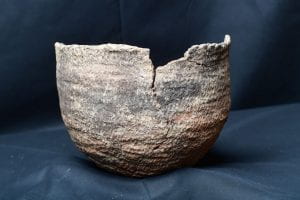
Many people, especially those from non-Western countries, know little about nature reserves. They think there are too many restrictions to protect nature reserves and their resources, more at https://writemyessay.nyc. Reserves are also meant to prevent poaching, and people are unaware of the need to do so.
Today, we will tell you the best way to do exactly that. We’ll take a gander at 11 of the most ideal ways to bring in cash online in 2022 — no catch and no money required from you to make ready.
Instructions to bring in cash online without paying anything…..
Read More: Earn Money By Online Work
Assignment Help Winchester offers the best online assignment writing help to the college students who wish to score top grades in their academic career. Our team of subject-oriented and highly qualified writers promises to deliver well-written and thoroughly researched assignments at affordable prices within the prescribed deadlines. If you want to receive an original document according to your university guidelines, then take our assignment writers help right away!
Such an informative post. If you are looking for the best animated logo designers, I recommend you logoistic. They have highly qualified and experienced logo designers who promise to deliver high-quality content